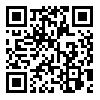BibTeX | RIS | EndNote | Medlars | ProCite | Reference Manager | RefWorks
Send citation to:
URL: http://cjdr.ir/article-1-69-en.html
Introduction: As the oral health related quality of life has been important in many dental patients GOHAI is an acceptable tool, preparing its Persian version can be useful in oral health research among Persian populations. The aim of this study was to evaluate the reliability and validity of the Persian version of General Oral Health Assessment Index (GOHAI).
Methods: Translation was performed using the forward-backward process. The final Persian version was then tested through an interview and test-retest to evaluate its comprehensibility and reliability. A sample of 150 subjects (20-65 years old) was requested to answer the GOHAI items prior to a clinical examination.
Data on the subjects’ socio-demographic characteristics and self-rating report of oral health, general health and dental care needs were recorded. Internal consistency was calculated by Cronbach’s α. Interview and test-retest reliability was evaluated by weighted kappa. Concurrent validity was assessed by comparing GOHAI scores and self-rated measures of oral health, general health and perceived dental care needs. Discriminant validity was tested by comparing GOHAI scores with clinical oral condition.
Results: The mean GOHAI score was 46.78±7.85. Cronbach’s α (0.78) showed a high internal consistency and homogeneity between items. Weighted kappa coefficient for the interview varied from 0.60 to 0.96 and was between 0.33 and 0.64 for test-retest. Bland-Altman plot displayed a good agreement between the two GOHAI scores for both the interview and test-retest. There was no significant relationship between GOHAI scores and self-rating oral health (p=0.090), but there was a relationship between self-rating general health and mean GOHAI scores (p=0.047). Also, the low GOHAI scores were associated with the perceived dental care needs (p=0.001). There was an opposite correlation between GOHAI scores and caries and missing teeth (p<0.0001).
Conclusions: The Persian version of the GOHAI exhibits acceptable reliability and validity, so it can be used widely throughout the persian communities.
| Rights and permissions | |
 |
This work is licensed under a Creative Commons Attribution-NonCommercial 4.0 International License. |








